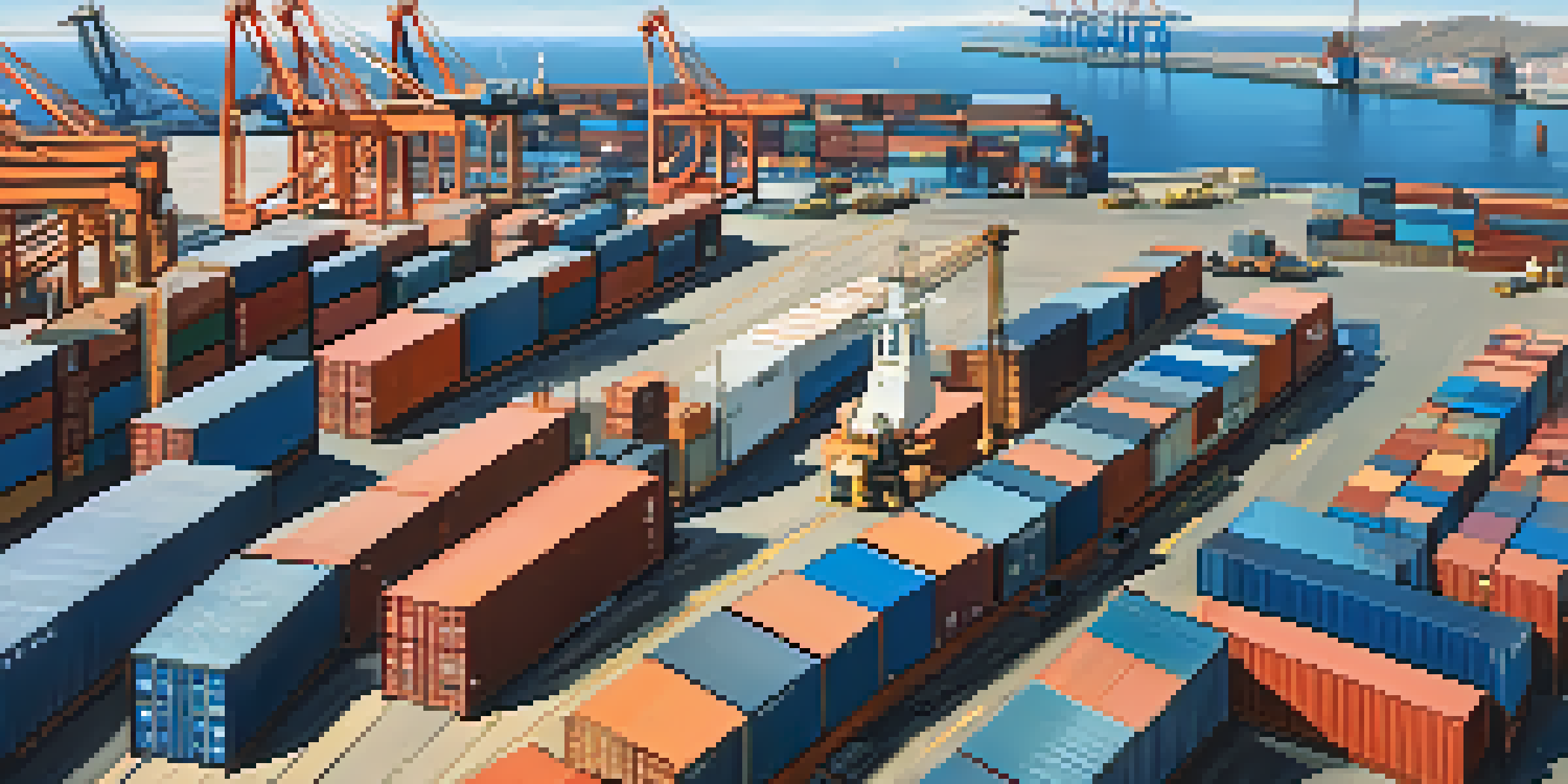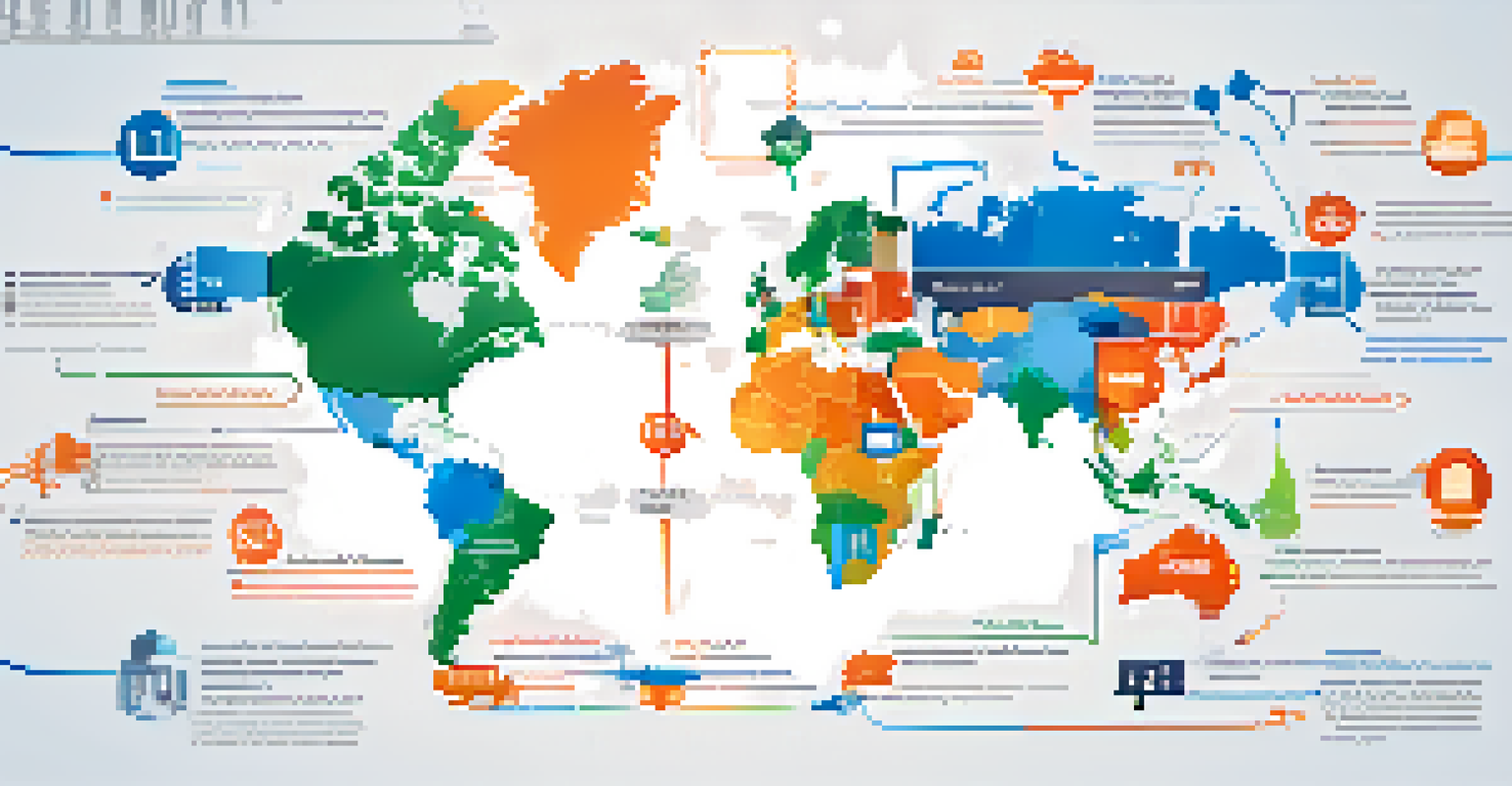The Impact of Trade Agreements on Export Management

What Are Trade Agreements and Their Purpose?
Trade agreements are treaties between two or more countries that outline the rules for trading goods and services. They aim to reduce barriers such as tariffs and quotas, making it easier for countries to exchange products. By promoting trade, these agreements can stimulate economic growth and create jobs.
Trade agreements are a vital tool for enhancing economic cooperation among countries.
For instance, the North American Free Trade Agreement (NAFTA) allowed for the free flow of goods between the U.S., Canada, and Mexico. This led to increased exports and a more interconnected economy. As a result, businesses in these countries found new markets for their products.
Understanding the purpose of trade agreements is crucial for export managers. They can leverage these agreements to strategize their export operations and take advantage of lower tariffs or expanded market access.
Types of Trade Agreements and Their Features
Trade agreements come in various forms, including bilateral, multilateral, and regional agreements. Bilateral agreements involve two countries, while multilateral agreements include three or more. Regional agreements typically focus on a specific geographic area, facilitating trade among neighboring countries.

An example of a multilateral agreement is the World Trade Organization (WTO), which promotes global trade cooperation. In contrast, the European Union (EU) is a regional agreement that allows free movement of goods among member states. Each type of agreement has specific features and rules that can impact trade significantly.
Understanding Trade Agreements
Trade agreements are essential treaties that reduce barriers to trade, fostering economic growth and job creation.
Export managers should be familiar with these types, as the nature of the agreement can affect tariffs, regulations, and market entry strategies. This knowledge helps in making informed decisions about where and how to export products.
Benefits of Trade Agreements for Export Management
Trade agreements offer numerous benefits for export management, including reduced tariffs and improved market access. Lower tariffs mean that exporters can price their products more competitively, potentially increasing sales. Moreover, access to new markets can open up opportunities for growth.
In the long run, the best way to reduce trade barriers is to build a multilateral trading system that enhances economic growth and prosperity.
For example, a U.S. company exporting machinery to Mexico may find that a trade agreement reduces their tariff costs, allowing them to offer lower prices. This can lead to increased demand and a stronger presence in foreign markets. Additionally, trade agreements often include provisions that protect intellectual property, further encouraging innovation.
Understanding these benefits allows export managers to refine their strategies and optimize their operations. By aligning their goals with the advantages provided by trade agreements, businesses can enhance their competitiveness in global markets.
Challenges Posed by Trade Agreements
While trade agreements can be beneficial, they also pose challenges for export management. Changes in regulations and compliance requirements can create uncertainty for businesses. Export managers must stay informed about these changes to mitigate potential risks.
For instance, a new trade agreement may introduce stricter rules regarding product standards or labeling. Exporters need to adapt their operations to comply with these regulations, which can be time-consuming and costly. Additionally, trade agreements may lead to increased competition, as more companies gain access to the same markets.
Benefits for Export Managers
These agreements provide exporters with lower tariffs and improved market access, enhancing competitiveness in global markets.
Being aware of these challenges is essential for export managers. They must develop strategies to navigate regulatory changes and stand out in a crowded marketplace, ensuring their products remain competitive.
The Role of Export Management in Leveraging Trade Agreements
Export management plays a critical role in leveraging trade agreements for business success. Export managers must analyze the terms of agreements to identify potential advantages for their companies. This involves understanding tariff reductions, quotas, and market entry strategies.
For instance, a company exporting textiles may find that a trade agreement with a specific country eliminates tariffs on certain fabrics. By capitalizing on this opportunity, they can increase their market share and profitability. Export managers must also monitor changes in trade agreements and adapt strategies accordingly.
Effective export management ensures that businesses are not only compliant with regulations but also able to seize opportunities created by trade agreements. This proactive approach can lead to sustained growth and competitive advantage in the global marketplace.
Case Studies: Successful Export Strategies Under Trade Agreements
Examining case studies can provide valuable insights into successful export strategies influenced by trade agreements. For example, consider a Canadian dairy producer that took advantage of the Comprehensive Economic and Trade Agreement (CETA) with the EU. By understanding the benefits of reduced tariffs, they expanded their exports significantly.
Another example is a technology firm in Japan that capitalized on the Trans-Pacific Partnership (TPP) to enter new markets across the Asia-Pacific region. By adapting their products to meet foreign standards and leveraging lower tariffs, they saw substantial growth in their export business.
Navigating Challenges Ahead
Export managers must stay informed about regulatory changes and increased competition arising from trade agreements to succeed.
These case studies illustrate how businesses can effectively navigate trade agreements to enhance their export strategies. By learning from successful examples, export managers can develop tailored approaches to their own operations.
Future Trends in Trade Agreements and Export Management
The landscape of trade agreements is constantly evolving, influenced by geopolitical shifts and economic factors. Emerging economies are increasingly entering into trade agreements, which can change the dynamics of global trade. Export managers need to stay ahead of these trends to remain competitive.
For instance, the rise of digital trade agreements reflects the growing importance of e-commerce. These agreements often include provisions for data flow and digital services, which can impact how companies export goods online. As technology continues to advance, export management strategies must adapt accordingly.

Looking to the future, export managers should be proactive in understanding these trends. Staying informed about new trade agreements and their implications can help businesses seize opportunities and navigate challenges in an ever-changing global market.